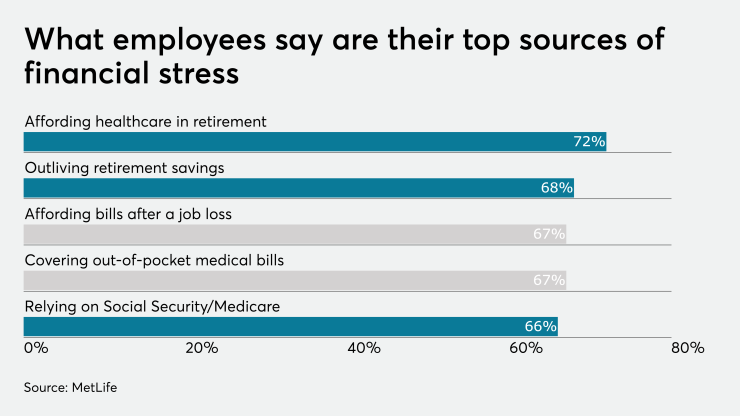WASHINGTON — Increasing stress and anxiety in the workplace is forcing employers think about how to mitigate internal and external stressors and focus on employee happiness.
Companies need to think about their workers’ lives more holistically, and address the stress impact workers as it has a significant impact on disability leave and absence management, said Joseph Heaney, senior vice president at MetLife.
“[The work-life balance] isn’t enough for employers to just be aware, but embrace and activate,” he said.
Addressing the stress impact workers is so important because it has a significant impact on disability leave and absence management, he said Tuesday, speaking at the Disability Management Employer Coalition’s annual conference.
The four biggest stressors impacting employees are personal commitments, personal and family health, work itself and personal finances, according to
There was a 13% increase in anxiety related incident rates between 2013 and 2017. There is also a one in 10 chance that an anxiety-related short-term disability claim could turn into a long-term disability claim, Heaney said.
“The good news for employers is, there are things we can do to offset this and work toward a happy workforce, [which will] lead to a more loyal workforce,” he said.
There are a few factors that impact employee happiness levels, including leadership trust, a culture of sharing and individuality, and having a workplace where colleagues feel like family or friends. But one of the biggest things benefit managers can do to increase happiness and lower stress is offer the benefits employees want, he said.
For example, many workers value PTO, and benefit managers should work to ensure they are giving employees enough of this benefit, and allowing them to use it, to help curb stress.
Also see:
“Creating a culture, where managers are encouraging and supportive of maximizing PTO is critical,” he said. “We’ve all worked in cultures where the benefits are available, but it isn’t part of that culture to fully utilize them.”
A majority of employees also are calling for more non-traditional benefits to help address their stressors, he added, pointing to programs to cut down student debt, mental health services, phased retirement and other financial wellness programs.
It’s important employers not only offer, but also invest in educating employees on these programs and how they link to stress management, he said.
“It’s not enough to just put them out there and expect employees to link these programs to reduced stress; it’s on us to educate them,” he said.






